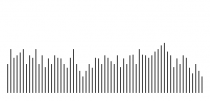In What is Art: Conversation with Joseph Beuys, Beuys states
“My objects are to be seen as stimulants for the transformation of the idea of sculpture, or of art in general. They should provoke thoughts about what sculpture can be and how the concept of sculpting can be extended to the invisible materials used by everyone:
Thinking Forms – the way in which we mould our thoughts
Spoken Forms – how we shape our thoughts into words or
Social Sculpture – how we mould and shape the world in which we live.” [i]
I read this book during my summer holidays, before the start of my final year at art school in Glasgow. It had a profound effect on me. At the time, I was listening to more and more ‘experimental’ music, excited by the way in which improvised music could be seen as model for a way of being in the world. I was consumed with idealistic theories of how art could change the world, and Beuys’ ideas of Social Sculpture rang true with my feelings at the time. I was also listening to a lot of folk music both from close to home and from around the world, realising how many different ways of singing there are on our planet, and how these songs are somehow portraits of the individuals as well as of the particular culture from which they come. That same year I had started to perform with my then new band ‘Nalle’, exploring the freedom that improvisation permits within the structure of more traditional song forms. What struck me whilst reading, listening, and playing was the relationship between Beuys’ ideas of sculpture moulded from invisible materials and the possibility of understanding singing as a sculptural process.
To sing is very physical process. Sound, though transient and immaterial, is a physical medium. It has a measurable volume, width, length and tempo. It exists as a physical energy, as sound waves moving through space and responding to space in particular ways. When I sing loudly I can feel the vibrations of the sound I am creating from my body. I can mould them by changing the amount of air I use and the shape of my mouth.
“… there is absolutely no possibility for a human being…. to express himself to someone else except through a material process. Even when I speak I use my larynx, bones, sound waves, for instance, and I need the substance of air…. There’s no possibility of conveying one’s meaning except through imprinting it in a particular material. And for some things less solid materials are needed than for others. But basically it’s the same thing whether I speak or combine pieces of iron and thus create an object.”[ii]
If indeed, sculptural forms can be shaped from our thoughts into words using the spoken voice, can we therefore, also understand song to be a sculptural form moulded from the singing voice? This process begins with listening and finds expression using the tongue, the larynx, air, sound waves and the ear of the listener as materials. In this way, the composition of song can be understood as a sculptural process that finds expression using the materials of the body. It therefore follows, that sound making and song naturally function as portraits of the self. Song Sculpture can thus be defined as the way in which we shape our feelings and thoughts into song.
Using my voice as well as the voices of others, I have worked with these ideas in a number of projects. Pollokshaws Song Portrait(Glasgow 2006), Kensington Cradle Songs (Liverpool 2007) and Abbeyview Note Catcher (Dunfermline 2008), bring together voices from diverse groups of people where recordings of songs and/or vocal sounds function as sculptural materials to create portraits. Airs of the Sea (Cromarty 2006), is a composition replicating the sounds of the sea, sculpted from the recordings of 100 different people’s breath. Salutation to the Sun (2006) also imitates a soundscape from the natural world; in this instance an entire dawn chorus is sculpted from a single voice. The projects experiment with dissolving language and structure, inviting the participant and/or listener to become absorbed in the merging of different layers of sound.
I use my voice as a material to compose and improvise, both alone and with other musicians. With the band Nalle I seek to explore the constituent elements of the voice within more traditional musical forms. I regard my own songs and performances as self-portraits of my personal experiences.
Find out more about Hanna here.
Visit Hanna on MySpace.
[i] Beuys in Conversations with Joseph Beuys: What is Art? Edited by Volkar Harlan (Clairview 2004) p.9
[ii] Ibid. p.56
/////
Mix-Blog: A bit like a mix-tape but with blogs instead. Read more from the series here.














Comments